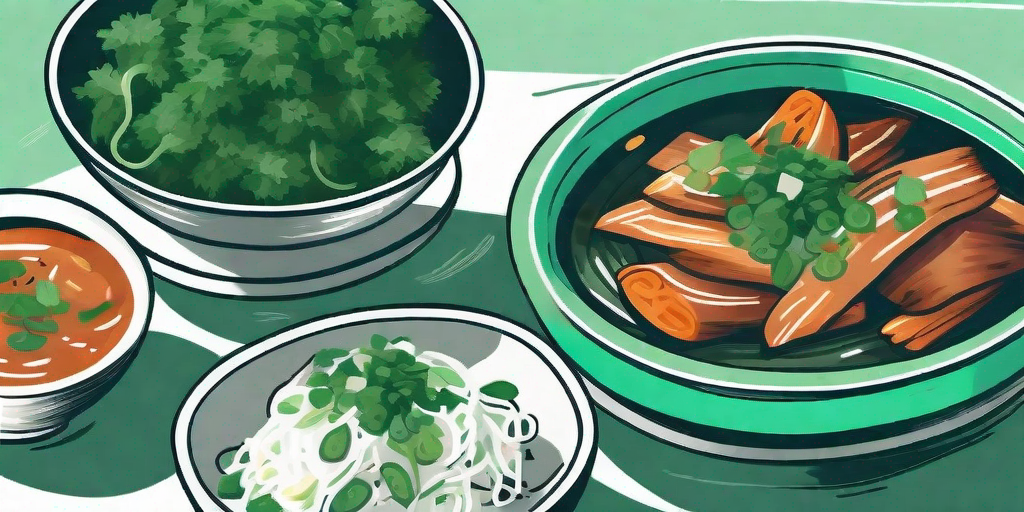
If your taste buds are yearning for an adventure, or if your dishes are crying out for a fresh, zesty kick, then Vietnamese cilantro, also known as Vietnamese coriander, is the herb you've been waiting for. This culinary superstar is not just a pretty green leaf - it's a flavor powerhouse that can transform your meals from 'meh' to 'marvelous' in a jiffy. So, buckle up, foodies! We're about to embark on a culinary journey that will leave your palate tingling with delight.
What is Vietnamese Cilantro?
Before we dive into the delicious world of Vietnamese cilantro, let's get to know our herb a little better. Vietnamese cilantro, scientifically known as Persicaria odorata, is a tropical plant native to Southeast Asia. Unlike its cousin, the common cilantro, Vietnamese cilantro boasts a stronger, spicier flavor that can add a unique twist to your dishes.
It's a staple in many Vietnamese dishes, from soups and stews to salads and spring rolls. But don't let its name fool you - this versatile herb can be used in a variety of cuisines, not just Vietnamese. So, whether you're whipping up a Thai curry or a Mexican salsa, Vietnamese cilantro can be your secret ingredient to impress your guests.
Appearance and Taste
Vietnamese cilantro is a slender, creeping plant that can grow up to 15 inches tall. Its leaves are dark green, with a unique pattern of dark 'V' shapes and burgundy streaks. But it's not just its striking appearance that sets it apart - it's the taste. Vietnamese cilantro has a robust, peppery flavor with a hint of citrus. Some even describe it as having a 'soapy' taste, similar to common cilantro, but with a spicier kick.
While the taste might be a bit strong for some, it's this very flavor that makes Vietnamese cilantro a beloved herb in many cuisines. It's a flavor that demands attention, that stands out, that says, 'Hey, I'm here, and I'm fabulous!'
How to Use Vietnamese Cilantro in Your Dishes
Now that we've acquainted ourselves with Vietnamese cilantro, it's time to roll up our sleeves and get cooking. But how exactly do you use this herb in your dishes? Fear not, dear foodies, for we have the answers.
Firstly, Vietnamese cilantro is typically used fresh. Its leaves can be chopped and sprinkled over your dishes as a garnish, or they can be used whole in salads and spring rolls. The stems, while often overlooked, can also be used in cooking and offer a slightly milder flavor.
In Soups and Stews
One of the most common uses of Vietnamese cilantro is in soups and stews. Its robust flavor can stand up to the heat and still shine through, making it a perfect addition to your hearty, comfort dishes. Just remember to add it towards the end of the cooking process to preserve its flavor and vibrant color.
Try adding a handful of chopped Vietnamese cilantro to your next pot of chicken soup or beef stew. You'll be amazed at the depth of flavor it can add.
In Salads and Spring Rolls
Another fantastic way to use Vietnamese cilantro is in salads and spring rolls. Its peppery, citrusy flavor can add a refreshing twist to your greens, while its vibrant color can make your dishes pop.
Try using whole Vietnamese cilantro leaves in your next salad or spring roll. Not only will it add a burst of flavor, but it will also make your dishes look like they've been prepared by a professional chef. Now, who wouldn't want that?
Health Benefits of Vietnamese Cilantro
But Vietnamese cilantro isn't just a flavor powerhouse - it's also packed with health benefits. This humble herb is rich in vitamins A, C, and K, and is a good source of dietary fiber. It also contains a variety of antioxidants, which can help protect your body against free radicals and oxidative stress.
Some studies have even suggested that Vietnamese cilantro can have antimicrobial and anti-inflammatory properties, making it a great addition to your diet. So, not only can it spice up your dishes, but it can also help keep you healthy. Talk about a win-win!
Frequently Asked Questions
Where can I buy Vietnamese cilantro?
Vietnamese cilantro can be found in many Asian grocery stores or online. You can also grow it at home if you have a sunny spot and a green thumb.
Can I substitute common cilantro for Vietnamese cilantro?
While both herbs have a similar flavor profile, Vietnamese cilantro has a stronger, spicier flavor. So, while you can substitute one for the other, keep in mind that the flavor will be different.
How do I store Vietnamese cilantro?
Vietnamese cilantro can be stored in the refrigerator, wrapped in a damp paper towel and placed in a plastic bag. It can also be frozen for longer storage.
Conclusion
So, there you have it, foodies! Vietnamese cilantro is a versatile, flavorful herb that can add a zesty kick to your dishes. Whether you're a seasoned chef or a culinary newbie, this herb can take your cooking to the next level. So, why not give it a try? Your taste buds will thank you!











